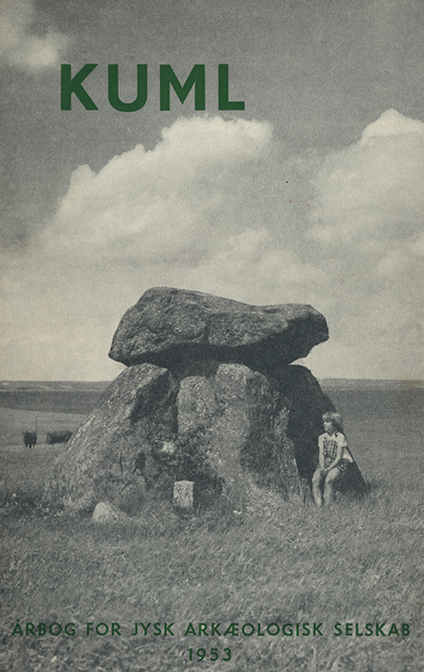Stenaldergrav fra Gabøl
DOI:
https://doi.org/10.7146/kuml.v3i3.97120Nøgleord:
stenalder, grav, stone age, grave, GabølResumé
A Stone Age Grave from Gabøl, with Jutland and Swedish Battleaxes
In 1939 Haderslev County Museum investigated an overploughed burial tumulus near the village of Gabøl in North Schleswig. In addition to several secondary Bronze Age burials in the outer edges of the tumulus a large stone setting was found in the centre (fig. 1, no. 8), presumably the remains of an Early Bronze Age oak-coffin burial. Under this was found the primary grave of the tumulus, a Single Grave, which appeared as an excavation in the subsoil sand, 2.55 metres long, up to 0.87 metres wide and 0.12 metres deep (fig. 1, no. 13). No stone had been employed, but at the bottom and sides the carbonised remains of a wooden coffin were found. At the bottom of the grave the very faint traces of a least one skeleton were found, lying with its head to the northwest, with somewhat flexed legs. It was impossible to determine with certainty whether one or two persons had been buried in this grave. In the grave, no. 13, two battleaxes were found; in the southern corner lay the axe illustrated in fig. 4, and in the opposite corner that shown in fig. 3. In addition two small amber beads were found (nos. 12 and 15, cf. fig. 5 a-b).
Southeast of grave 13 still another excavation in the subsoil was found, no. 13 a. It was 1.45 metres long, 0.75 metres wide and up to 0.22 metres deep. It contained traces of wooden planks and a number of stones (fig. 2, in background). It has not proved possible to determine with certainty how this excavation should be interpreted. It may belong to grave 13, or may instead be the result of later intrusion; it was in any case covered by the Bronze Age grave no. 8, which was apparently undisturbed.
Even though there thus appear to be points of uncertainty in the interpretation of the grave-complex from Gabøl as a whole, there seems to be no doubt at all that grave 13 was undisturbed, and that the two battleaxes were deposited at the same time. Fig. 3 is a normal Jutland Single-Grave axe from the Late Ground-Grave Period (Glob 3), Type I 3a) whereas fig. 4 is a Swedish boat-axe. This latter appears to belong to Oldeberg's Group E, and must in any case be regarded as of one of the later Swedish types.
Four times previously have Swedish battleaxes been found in tumuli or graves in Jutland 9-13) but under circumstances which did not allow of chronological conclusions. The grave from Gabøl gives for the first time an unambiguous contact between phases of the Jutland and the Swedish SingleGrave Cultures, and shows that the Late Ground-Grave Period in Jutland corresponds to the later period of the Swedish boat-axes.
C. J. Becker
Downloads
Publiceret
Citation/Eksport
Nummer
Sektion
Licens
Fra og med årgang 2022 er artikler udgivet i Kuml med en licens fra Creative Commons (CC BY-NC-SA 4.0).
Alle tidligere årgange af tidsskriftet er ikke udgivet med en licens fra Creative Commons.


